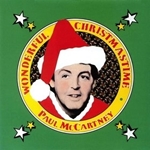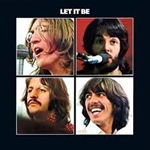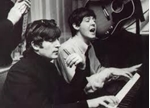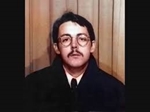- Register
- Log in to Tune-In
- Wishlist (0)
-
Shopping cart
(0)
You have no items in your shopping cart.
Beatles News

“Wonderful Christmastime” is the worst of Christmas songs, but it makes up for it by also being the worst of all songs, the worst song ever written by a human, Beatle or otherwise, the worst melody, the worst synthesizer, the worst production, the worst Wings song, the worst pronunciation of the word “here,” the worst lyrics, the worst scent. I have never seen the cover of the 45, but I bet it f**ing sucks. "Wonderful Christmastime" is the most terrible song ever written by anyone, or anything, ever, including robots and gorillas and Puff Daddy and Courtney Love. No one likes "Wonderful Christmastime." No one. Paul McCartney hates it. All of Paul McCartney's wives hate it. Santa thinks it's a joke. God is like, " I did not bestow upon you the Breath of Life to dishonor me with this unMely dreck," and I imagine He's not real happy about "Ebony and Ivory" either.
Source: Jeff Vrabel
details
LOVE, three chords and the truth are all you need when in the presence of the rock greatness of Paul McCartney.
After winning hundreds of thousands of hearts and minds as his One on One tour wound around the country, he finally arrived in Sydney for his two final Australian concerts at Qudos Bank Arena.
It was impossible not to marvel that after a very long 23-year wait for the Maccalytes, that here he was, a Beatle for crying out loud.
This was the man who managed to transcend the weight of that legend to maintain a profound influence on pop culture for five decades, with Wings, his vast solo work and who most recently shared chart glory with Kanye and Rihanna and the Foo Fighters.
McCartney traversed all those chapters in a show which stretched to almost three hours with plenty to sing about love, that perennial pop song obsession.
There was his great romantic loves. My Valentine was inspired by and dedicated to his wife Nancy in the audience.
And a couple of songs later, Maybe I’m Amazed which he wrote for his late wife Linda got a false start of wrong notes and words before this rock god decided to embrace his fallibility and declare it a trainwreck.
Source: Kath details

Paul McCartney may have intended the Beatles’ “Two of Us” to celebrate his blooming romance with Linda Eastman, but those words also summarized his friendship and creative partnership with John Lennon. Though recorded during the Beatles’ turbulent Get Back sessions, “Two of Us” remains a tender ode to love and friendship, although McCartney surprisingly intended the song for someone else to record.
As McCartney told biographer Barry Miles, he and Eastman would enjoy going for country drives together, often getting lost on purpose. Once she moved permanently to London, the couple would frequently bundle McCartney’s sheepdog Martha into the car, pick up a picnic lunch, and drive out to a remote rural area. Eastman would then take photographs as McCartney strummed his guitar.
It was during one of those adventures that McCartney composed what he originally titled “On Our Way Home.” “We’d just enjoy sitting out in nature, and this song was about that: doing nothing, trying to get lost,” McCartney told Miles. “It’s a favorite of mine because it reminds me of that period, getting together with Linda, and the wonderfully free attitude we details

Sir Paul McCartney relished the "competitive" nature of his relationship with John Lennon.
The iconic duo penned some of the most famous songs in history during their days with the Beatles, and Sir Paul has revealed how the late star's determination to be the best helped to improve his own songwriting.
He explained: "It was quite competitive because if I wrote something he'd try and better it and then I'd try and better that, so it's a good system.
"It means you're going up a staircase and each time you're trying to make it better, so if that works it can make the song very good ... and in our case memorable.
"That was the trick because we couldn't put it down, we couldn't put it on a recording like today, you just had to remember it. So that was a good restriction too, it meant if you forgot it, too bad.
"So, it had to have a hook and nearly always, even if you forgot it in the evening, you'd go out for a drink and say, 'what was that bloody song'. You'd wake up in the morning an go 'oh yeah, I remember!' It would just come back."
The Beatles split in 1970, but Sir Paul never considered quitting music altogether, admitting it remains his obsession.
He told Australia's ABC details

Paul McCartney's long-lost Christmas album Unforgettable has been posted on YouTube more than 50 years after it was created.
Simon Wells, a Beatles fan who shared the video online, said McCartney made the album as a Christmas gift in 1965 for his bandmates John Lennon, George Harrison, and Ringo Starr. According to the Huffington Post, only three additional copies were made in addition to McCartney's original, which he created in his home.
Per Mark Unterberger's book, The Unreleased Beatles: Music and Film, McCartney told Mark Lewisohn in 1995 how the album came about.
"I had two Brenell tape recorders set up at home, on which I made experimental recordings and tape loops, like the ones in 'Tomorrow Never Knows,'" McCartney said. "And once I put together something crazy, something left-field, just for the other Beatles, a fun thing which they could play late in the evening. It was just something for the mates, basically."
The album features McCartney playing the role of a DJ as he introduces a playlist of various songs. There is no new content on the album from The Beatles or McCartney, but it features hits from The Rolling Stones, Elvis, and Nat King Cole, who sings the title track.
Whil details

Ozzy Osbourne says that he owes his whole career to the Beatles.
The former Black Sabbath frontman was speaking to the End The Silence campaign by charity Hope And Homes For Children, which has been encouraging artists from across the music world to reflect on songs that made a difference to their lives when they were younger.
Ozzy chose She Loves You by the Fab Four and adds: “That song changed my life. She Loves You had such an impact on me. I remember exactly where I was. I was walking down Witton Road in Aston, I had a blue transistor radio and when that song came on I knew from then on what I wanted to do with my life.
“This was so brand new and it gave me a great feeling. Then I became an avid Beatles fan – they were great.
“I owe my career to them because they gave me the desire to want to be in the music game.”
Source: Team Rock
details
Sir Paul McCartney has had the same dream that he's flopping on stage for 50 years.
The Beatles legend might have been attracting massive crowds to his shows for more than five decades, but the 75-year-old musician is left in " cold sweats" at the thought of turning up to perform and stadiums full of people getting up and leaving.
McCartney - who has four adult children with late wife Linda and 13-year-old Beatrice with second spouse Heather Mills - admitted: "Ever since I started performing there is a dream I still have which is you are in a stadium playing with The Beatles or with this band and people start leaving and it is like 'OK what are we doing wrong' we try to pull out the big ones but they're still leaving. You wake in a cold sweat."
The 'Come Together' hitmaker is currently in Australia for his sold-out 'One On One Tour'.
Source: GV News
details
He's one of the most famous people on the planet and has been performing on stage for almost six decades. But at 75, Paul McCartney still has anxiety dreams about getting up in front of a crowd.
"Ever since I started performing there's like a recurring dream which is, and I still have it to this day, which is you're in a stadium and you're playing with The Beatles or with a band and people start leaving and it's like, 'OK, what are we doing wrong?'" he said.
"And we're trying to pull out the big one like, 'Quick, play Hey Jude, quick!' And they're still leaving.
"'Quick, Long Tall Sally!' And they're just drifting away and you wake up in a cold sweat."
The former Beatle sat down with 7.30 at the start of his Australian tour in Perth.
Rediscovering the old hits
Despite what you might think, he's not sick of playing his old songs.
"The funny thing is, particularly these days, it's like I'm rediscovering them," he said.
"You don't just sing and think of nothing. So I'm thinking of being in the studio with the guys when we did it.
"I'm thinking of how I wrote it, and on some of them I'm looking at them thinking: 'This is a 24-year-old kid who wrote this', which ha details

Ex-Beatles drummer Pete Best is set to make his acting debut in Liverpool in a new comedy called Lennon’s Banjo.
The show - about a quest to find the instrument that John Lennon first played music on - will be performed at the Epstein Theatre next spring.
Best will play himself in the brand new comedy stage production which runs between Tuesday, April 24 and Saturday, May 5 2018.
Written by Rob Fennah, the story focuses on Lennon's missing banjo which is considered to be the holy grail of pop memorabilia.
The instrument has been missing for six decades and it is now worth millions to the person that discovers it.
Source: Liverpool Echo
details
Sir Paul McCartney has helped a Perth man propose to his girlfriend 10 years after the couple met on a Contiki tour and bonded over their love of the Beatles.
Martin held a sign up at the rock icon's concert on Saturday night and was brought to the stage during the encore to pop the question to Saya, with McCartney instructing him to get down on one knee.
He then signed Saya's Beatles jacket and joked: "It's going straight up on eBay."
The clearly overwhelmed couple hugged McCartney and thanked him for making their night special as he kicked off the Australian leg of his One on One world tour, but they weren't the only ones.
The crowd lapped up every minute of the Englishman's set, which ran for more than three hours and included many beloved Beatles and Wings hits.
The show opened with classics, including A Hard Day's Night and Can't Buy Me Love, before McCartney took his jacket off.
"That was the one and only wardr details

Sir Paul McCartney has donated a rare album to raise funds for the families of Eilidh MacLeod and Laura MacIntyre.
Eilidh, 14, died in the Manchester Arena attack on May 22, while her friend Laura, 15, was seriously injured.
Soon after the tragedy Sir Paul donated a special Sgt. Pepper’s Lonely Hearts Club Band 6 Disc Super Deluxe (50th Anniversary Edition) box-set which will be auctioned to raise funds for the two families, who are from Barra in the Outer Hebrides.
The album will be personally dedicated and personalised to the successful bidder.
It will be auctioned in the run-up to the 40th anniversary of one of Sir Paul’s Wings songs Mull of Kintyre reaching number 1 at Christmas in 1977.
The girl’s parents said the gesture is “amazing and brilliant’.
Source: Manchester Evening News
details
She's fast approaching the big 5-0.
But the ever youthful Heather Mills, 49, rolled back the years in a backless floor length floral gown at the Brilliant Is Beautiful gala in London on Friday.
The former wife of Paul McCartney showed off her enviable figure as she posed for pictures along the red carpet clearly lapping up the attention.
Chic: Heather Mills, 49, rolled back the years in a backless floor length floral gown at the 'Brilliant Is Beautiful' gala in London on Friday. The former wife of Paul McCartney showed off her enviable figure as she posed for pictures along the red carpet, lapping up the attention
Turning heads in the floor length dress, Heather posed cheekily in the dress which boasted semi-sheer inserts along the seem. And twirling for pictures, she flashed the flesh with a backless insert fastened at the neck.
Heather's dress, with Japanese lily flourishes, was tapered in around the waist before billowing out to skim the floor.
Letting her short blonde tresses fall to her shoulders, Heather wore a smattering of light makeup to highlight her natural good looks.
Source: Daily Mail

Kenneth Womack’s new book on George Martin
is the first of two volumes (the second comes out next year), and it seems to be the first biography of the Beatles producer, which is kind of surprising. That alone makes Maximum Volume: The Life of Beatles Producer George Martin, The Early Years 1926-1966
a significant work in and of itself (although Martin himself wrote a pair of memoirs in the ’90s, the first of which—1994’s All You Need Is Ears
—Womack sources for insight into his early years).
Womack's book, perhaps unsurprisingly, is dominated by Martin’s working relationship with the Beatles, which began in 1962—quite late in the 40 years this first volume surveys—but takes up more than three quarters of the text. While Martin’s pre-Beatles years are covered more than adequately, it might have been fun to dive deeper into his groundbreaking work producing comedy records with the likes of Beyond the Fringe and Peter Sellers, much of which demanded wild creativity in the studio and stood him in good stead when the Beatles began to expand beyond their two-guitars-bass-and-drums sonic template. Britain’s “satire boom” of the earl details

Paul McCartney, one of the two remaining Beatles, will appear in Australia for the first time in 24 years.
McCartney will kick off his highly-anticipated One On One tour at nib Stadium in Perth on Saturday but on Thursday, at an undisclosed time, 20 of his fans have been invited via social media to take part in a QA at the Regal Theatre in Perth.
The time at which they will get to meet their idol won't be revealed until Thursday morning and phones won't be allowed in to the QA.
McCartney will also be performing in Melbourne, Brisbane, Sydney and Auckland on the tour but this fan event will be exclusive to Perth.
McCartney's last tour of Australia and New Zealand was in 1993 as part of The New World Tour, while a promoted tour in 2002 was cancelled after the Bali bombings.
Source: Sky News
details
Ringo Starr announced today (Nov. 29) a revamping of his long-running lineup of his All Starr Band for a 2018 tour of Europe and Israel. (See dates below.)
Re-joining the All Starr Band for the 2018 dates is Colin Hay. The former Men at Work frontman previously performed with the lineup in 2008. Joining for the first time is 10cc co-founder Graham Gouldman. In addition to co-writing the 10cc songs “I’m Not in Love” and “The Things We Do For Love,” Gouldman penned such British Invasion hits as the Hollies’ “Bus Stop” and the Yardbirds’ “For Your Love,” among many others.
Continuing with the All Starr Band are Santana/Journey star Gregg Rolie, Toto’s Steve Lukather, Warren Ham and Gregg Bissonette.
Most recently, Starr, who turned 77 on July 7, toured the U.S. in October and November offering a combination of songs that he sang lead for The Beatles (“With a Little Help From My Friends” and “Yellow Submarine,” among them) as well as many solo hits (including “It Don’t Come Easy” and “Photograph”).
Source: bestclassicbands.com
